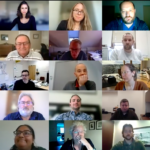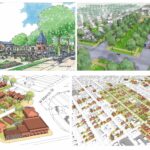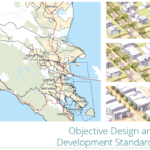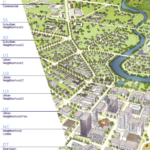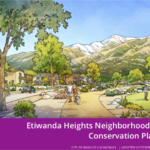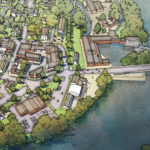New Research on Signs Within a Walkable Street Environment by Roger Eastman
The Signage Foundation, a research organization based in Washington, D.C., is partnering with faculty and graduate students at Michigan State University on a research project that focuses on signage, urban design and form-based codes. This project is in its early stages; the research team has completed a literature review and is starting to conduct field work in approximately 15 Midwestern communities.
The project involves analyzing the conditions under which signs are most visible and enhance economic activity, when located in an urban environment where place-making and livable streets enhance community vitality. Researchers hope to determine how to achieve a balance between providing streetscape amenities and ensuring the visibility of on-premises signs. They also hope to determine the amount of aesthetically pleasing or useful streetscape elements (trees, cars, benches, trash receptacles, posts, etc.) that are likely to attract visitors and shoppers, while permitting the placement of on-premises signage that will draw patrons’ eyes and support economic activity.
The research team will use logistic regression analysis techniques to explore the extent to which the density of various streetscape elements affects sign visibility. The ultimate goal of this research, which will be carried out using 3M’s Visual Attention Software, is to help inform place-making design standards in form-based code development. The software analyzes designs, using algorithms developed by a 3M scientist that simulate what people see during the first three to five seconds of viewing and can analyze almost any type of marketing visual: print ads, web banners, billboards, store shelf diagrams or models.
Roger Eastman, AICP, a member of FBCI’s Resource Council, has been invited to join a small committee of mostly sign industry representatives to provide a high-level perspective and advice to the project team. Eastman has more than 25 years of experience as a planner in Arizona, which includes writing sign codes. The researchers hope to complete the project and a report describing high-level findings by August 2017 and to present them during the 2017 National Signage Research & Education Conference at Michigan State University in Lansing, Mich., and the 2017 Council of Educators of Landscape Architecture International Conference in Beijing, China.
For more information on this project, “Analysis of on-premise signage pre-attentive processing in pedestrian streetscapes to inform place-making design standards in form-based code development,” contact Eastman at (928) 451-2127 or [email protected].


